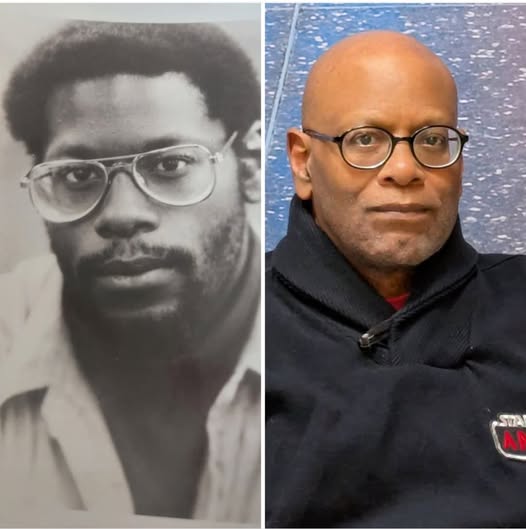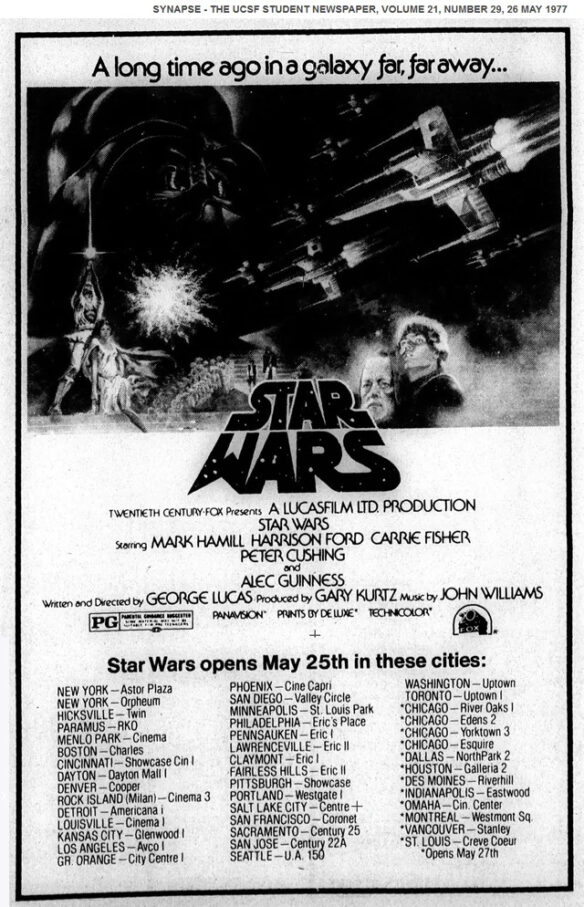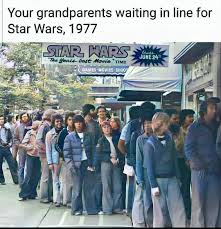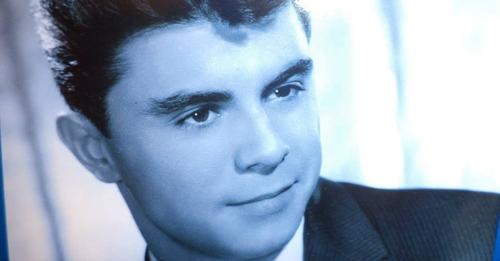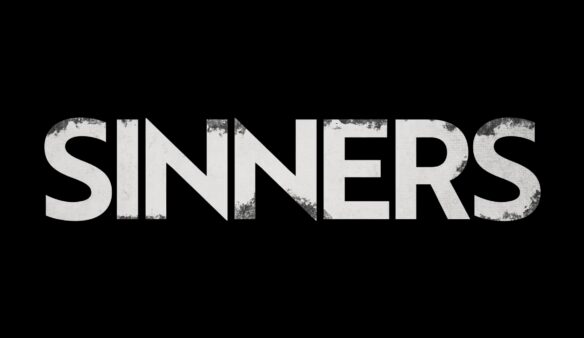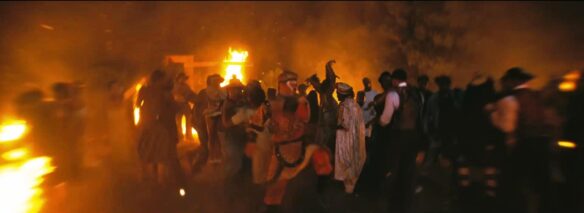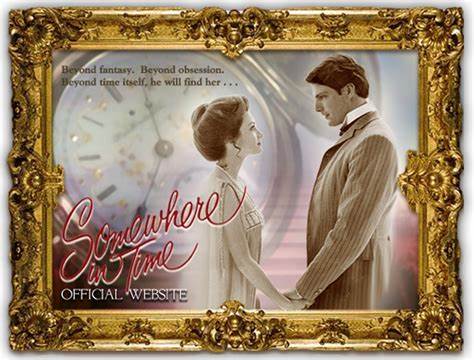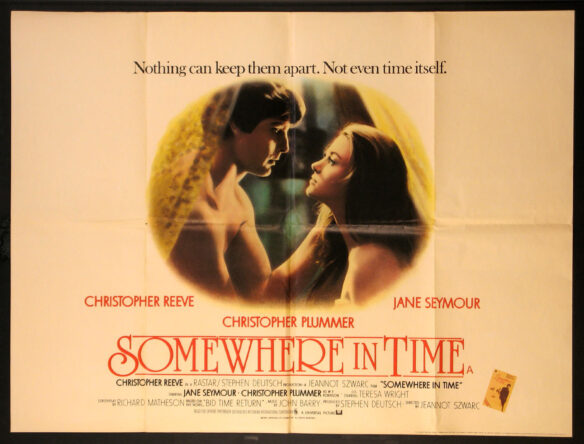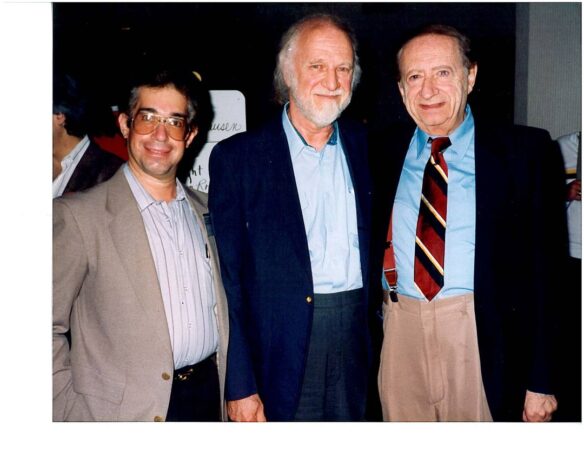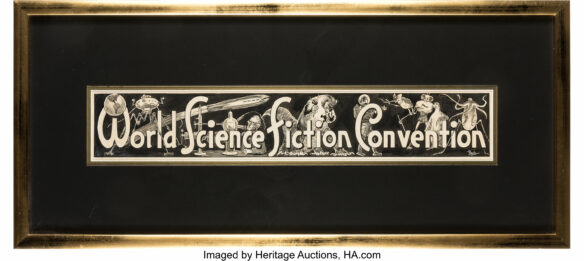
By Lee Weinstein: I was 13 when my aunt handed down, by way of my mother, an intriguing science fiction paperback book. The cover painting showed what looked like a metal robot, with a nude woman, tastefully clothed in shadows, running behind it, against a rather surrealistic background. The book was No Time Like the Future, a collection of stories by one Nelson Bond, a name not well known today, and it had been published a decade earlier, in 1954.

I was already a science fiction fan then, and had an omnibus collection of H.G. Wells’s novels, and had read books by Asimov, Heinlein, and others from the library, but here was something new.
The blurb on the back cover read, “A race of intelligent beings so small as to be invisible…a burial place on earth that holds a secret twenty-five centuries old, a satellite of destruction hovering in space, a super ship that flew for years through space – to nowhere…”
The cover illustrated the story, “The Cunning of the Beast;” a cleverly thought out variation on Adam and Eve. The “robot” was actually an alien in protective armor against earth’s atmosphere and the woman was, of course, Eve. As I was to learn years later, the cover was an early one by noted artist Richard Powers, whose surrealistic artwork went on to grace many a science fiction paperback over the years.
The other stories also made an impression on me at the time. “And Lo! the Bird” had the central conceit that the planets of the solar system were the eggs of a huge interstellar bird, incubated by the sun. “Vital Factor” was about a homesick alien on earth, and “Conqueror’s Isle” was about a secret race of superhumans on a remote island. Some of the plots might be considered to be clichéd now, but then they were new, at least to me.
I found Bond’s stories to be engaging and amusing and was taken with the twist endings. In a way he could be considered to be the O. Henry of science fiction. For a long time I continued to associate science fiction with surprise endings.
A little over a decade later, in the early 1970’s, I discovered fandom and science fiction conventions, through my newly discovered interest in H.P. Lovecraft and fantasy horror fiction.
It was an exciting time for me as I heard and met many of the authors and editors I had been reading. I met Gardner Dozois, Lin Carter, Sprague de Camp, Isaac Asimov, Clifford Simak, and many others. Nelson Bond wasn’t among them, though. When I thought to ask about him, I learned that he didn’t attend conventions. Nor had I heard his name mentioned either on panels or at fan social events. But I asked around from time to time, and eventually discovered that he had changed careers. He had retired from writing in 1958, after two decades of popularity starting in the late 1930’s, and had settled down to become a full time book dealer, after a brief detour in Hollywood.
He was eventually to write two more stories, at the request of editors, but that wouldn’t happen until much later.
During his heyday his stories frequently appeared in Blue Book. But he had also appeared in such magazines as Esquire and Scribners as well as genre magazines like Astounding, Amazing, Unknown, Thrilling Wonder and Weird Tales. Many of his stories, I discovered, had also been adapted for radio shows such as X Minus 1 and Tales of Tomorrow, and a few made it onto early television.
Despite the fact that he had retired from writing and the science fiction community, he was still alive and well in Virginia in the 1970’s. Fans I met told me there was a science fiction fan club in Virginia named after him, although he didn’t understand why they would want to do that.
While there was little chance of seeing him in person, I did come across more of his work in convention dealer’s rooms. I found well-read, used hardcovers of his collections, The 31st of February and Lancelot Biggs: Spaceman. The former had a photo of the author on the back flap, showing a dapper-looking gentleman in profile, with dark, slicked back hair and a trim mustache
Eventually I also found a paperback copy of one of his few novels, Exiles of Time, and a newer collection, published by Arkham House in 1968, Nightmares and Daydreams.
It was in these later books I acquired that I learned he also had written several series of stories often involving humorous and colorful protagonists, such as Lancelot Biggs, and Pat Pending. Lancelot Biggs was his only series character to have his stories collected into a book. Tall, gawky, and jug-eared, Biggs was sort of a Gomer Pyle in space, who would drive his captain crazy in his attempts to be helpful. No matter how badly he screwed things up he always managed to straighten things out by the end.

The Pat Pending series was about an eccentric inventor, who “certainaceously” mangled the English language when he explained his “inventulations” and how they worked. In the story, “The Bacular Clock,” Pending invents a clock that runs backwards. But somehow, it also causes time in its vicinity to run backwards as well, creating problems for everyone. Other series characters include Horsesense Hank, an uneducated farmer who could fix anything and Squaredeal Sam McGhee, who is best described as a con man and a teller of tall tales, and has been compared to the Joseph Jorkens tales of Lord Dunsany. There is even a crossover story, “The Masked Marvel,” in which Pending and McGhee cross paths. Pending introduces McGhee to a robot golfer he created, who apparently can’t lose, and McGhee is quick to take advantage of the situation, but it naturally doesn’t turn out well for him.
Then there is the trilogy of serious but ironic stories about Meg the Priestess, set in a far future, post-holocaust America, where women had become the dominant sex. The first Meg story, “The Priestess who Rebelled,” later revised as “Pilgrimage,” is possibly his most anthologized story and arguably his most memorable. Meg, a young woman seeking a vocation as a priestess, leaves her “hoam” and embarks on a mandatory pilgrimage from “Jinnia territory” in the south through “Braska” to “the Place of the Gods.” What she finds there is an eye-opening revelation.
I remember thinking to myself, somewhere around 1980, that it was time for a revival of interest in Bond’s fiction. However, unbeknownst to me, the first sign of a revival had already happened. Harlan Ellison had commissioned him to write a new story for his Last Dangerous Visions. This story, “Pipeline to Paradise,” was listed in the projected table of contents for the proposed book in 1979. Unfortunately, the story wasn’t to see print until Bond had withdrawn it and sold it to Roger Zelazny for his 1995 Wheel of Fortune anthology. It was Bond’s first new story since 1958, a tale of ghostly revenge involving two Vietnam veterans, and it showed that Bond still had it.
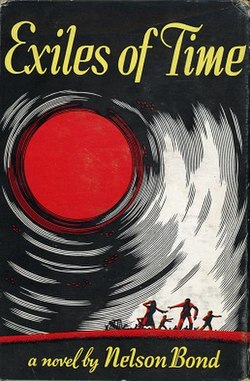


Meanwhile, word had gotten out that this almost forgotten author was still alive, and in 1992 he was awarded the First Fandom Hall of Fame Award.
Then in 1998, he was presented with SFWA’s Author Emeritus Award for Lifetime Achievement. As a result of the SFWA award, Gardner Dozois requested a new story from him for Asimov’s Magazine. “Proof of the Pudding,” which was to be his final story, was published in that magazine in 1999. It concerns an extremely rich and equally eccentric businessman who sets out to prove we are living inside the crust of a hollow earth. His attempt to do so does succeed after a fashion, but it has unintended consequences and naturally ends badly for him. It would have fit in nicely with his earlier tales.
It was then that I decided to acquire a copy of his first story collection, Mr. Mergenthwirkers Lobblies to complete my collection of Bond’s books.

I knew that his first published story, the title story of this 1937 collection, a humorous fantasy about a man with invisible companions, had later been adapted for radio and then television. It had also generated several sequels. I was curious to read it and in 1998 I decided to find a copy.
At that time I was living with my wife in the Frankford section of Northeast Philadelphia, across the street from Frankford High School. I knew Bond had become a bookseller, and when I searched for him online I quickly found he still had a website.
I couldn’t help but smile when I saw Mr. Bond’s email username. It had his initials followed by the sly numerical in-joke, “007.” I immediately sent him an email and told him I wanted to buy a copy of Lobblies. He hesitated at first because, as he explained, he noticed the copy he had at hand was damaged. But he soon found an intact copy and I mailed him a check. He said to me in the following email, “You do know about my Philadelphia connection?” I admitted I didn’t and asked him to elaborate. He told me he had lived in Philadelphia when he was a teenager, and had attended Frankford High School. I was momentarily dumbstruck. I was, at the time, as previously noted, living directly across Harrison Street from that school. What were the chances of that? I wrote back and told him. He then explained had lived at the time on Fillmore Street. That was the next street over from mine. Wow! We would have been geographically close neighbors, if we hadn’t been separated in time by about 80 years!
He asked me to do him a favor. He had in his possession a portrait of one of the principals of the school from back in his day. Could I ask the current principal if he would be interested in the portrait?
I jotted down the information and went across the street, found the principal’s office, and told his secretary the nature of my mission. She took down the information and promised to get back to me.
She did a while later and told me that the principal had suggested the school’s alumni association might be interested. After I conveyed his response, Mr. Bond replied that if the school itself didn’t want it he would find somewhere else to donate it.
He went on, however, to make me an unrelated offer. He told me if I shipped him my “Bond books”, as he called them, he would “deface” them with his autograph. I readily complied. While I was corresponding with him, I suggested he could make an appearance at Philcon, the Philadelphia Science Fiction Society’s annual con, as a program participant. He gave the idea some consideration, but in the end he politely declined, citing his age (about 90 at the time) and the chilly November weather when Philcon is held.
During our correspondence, because his fiction had been out of print for so long, I suggested he get in touch with Wildside Press, an independent Print-on-Demand publisher I was quite familiar with. As a result, Wildside reprinted the Lancelot Biggs collection in 2000, and in 2001, his novel That Worlds May Live, which had not previously been published in book form.
Not long after, Arkham House continued the momentum and released two new collections of Bond’s uncollected short stories, The Far Side of Nowhere (2002) and Other Worlds than Ours (2005).


As a capstone to his career, in 2005, he received the Southeastern SF Achievement Award for Lifetime Achievement. Just a year later, he passed away, at the age of 97, in November of 2006.
In further recognition, albeit posthumous, Readercon 19 programmed a half hour presentation on him by Mike Allen in 2008.
And his fiction remains. While not as thought-provoking as Asimov, Clarke or Heinlein, Bond’s stories are polished, entertaining, and amusing. The Pat Pending story, “Lighter Than You Think” was reprinted as an e-book in 2009 by Project Gutenberg. His novel Under Venusian Flags was published in 2018 in hardcopy, along with an Algis Budrys novel, as part of the Armchair Sci-Fi & Horror Double Novels series. The Gutenberg Project, starting in 2020, resumed reprinting Bond’s short stories, as e-chapbooks.
And the copies of his books that he kindly “defaced,” for me, still grace my shelves.
[Lee Weinstein’s website is: [https://leestein2003.wordpress.com/]



